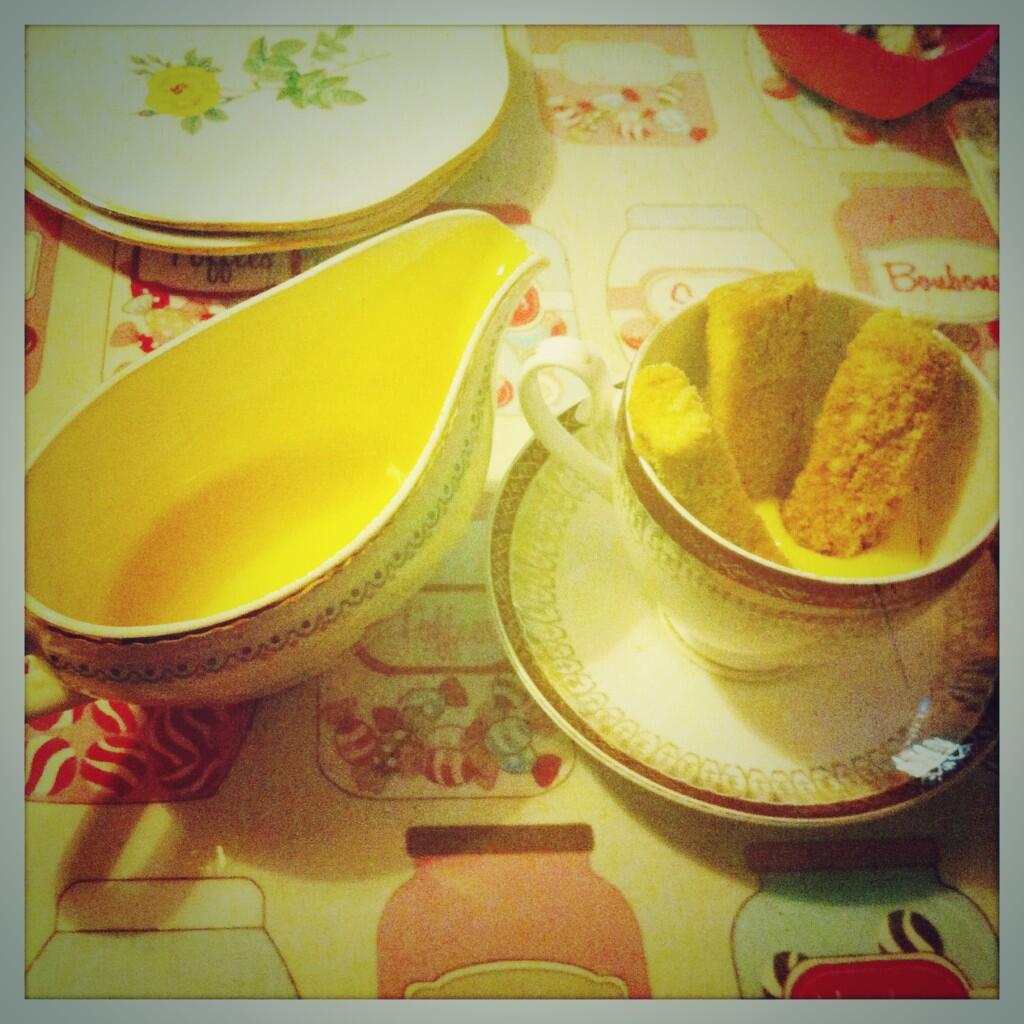Who saw The Great British Bake-Off last night? Other than the tragedy of me not having any biscuits in the house (and after a day of baking I wasn't about to turn the oven on again), it surprised me by being my favourite episode ever.
Quite apart from the Dalek biscuit tower - I love
Doctor Who bakes - someone made a kransekage! Well, sort of. Glenn's Macaron helter-skelter was made in the pans and kind of the right shape. Which gives me the perfect opportunity to talk about what they should be like.
I cannot find a picture of Glenn's cake, despite putting writing on hold for an hour to search for one, so here's a picture of Glenn. Look at his face. I love Glenn.
 |
© BBC
|
So, back to the subject: kransekage.
Kransekage is what the Danes call them, the Norwegians say Kransekake. The Swedes, for reasons unknown, don't eat them at all. They are not macarons, despite being almond based. While macarons are very light and delicate, kransekage are more solid, with a thicker "shell". More almonds, less egg white. And no flavouring: the almonds stand out for themselves. And they're far easier to stack; Glenn is either a genius or a madman, but I wouldn't try and stack macarons ever. It worked though, hats off to the man.
You can make kransekage with ground almonds, and many Scandies do, but the best way I've found is to use a base of proper Danish marzipan. I favour either Anton Berg or Odense, both of which are 60% almond. To put this into context, the marzipan we get here and use to cover cakes is around 25%. The difference is important: You couldn't make a kransekage with British marzipan, it would taste of nothing; and covering a Christmas cake in Danish marzipan doesn't work at all, it just doesn't seal the cake.
I
instagrammed the ingredients because they're so pretty!
The stacked kransekage are celebration cakes: New Year, weddings, anniversaries, special birthdays. It's a testament to how much they are loved that the ex-pat Twitter community got very excited when Glenn produced those tins. We love them. You can have finger bites which taste just as good, but there's something about those stacked beauties that just makes people happy. I baked them for my son's naming day and my Mum's 60th, they were my wedding cake and my parents' Ruby anniversary cake. Every Dane I know had them at their weddings.
Despite baking them all the time, kransekage are still one of my favourite cakes. In Denmark I seek them out in all their forms and I never get bored with them. Why? Well apart from the fact that they are always a treat, they are just amazing. Soft on the inside with a not-quite-crispy crust, rich but still light, satisfying in every way. And this is what they should look like:
See? SEE? They're so TALL. And golden. Inviting you to break off a piece, bite through the crunchy icing and savour the light almonds inside.
And if that's not enough, they also come dipped in chocolate!
For a more reasoned description, I'd recommend you read my friends at
Scandinavian Kitchen's blog.












